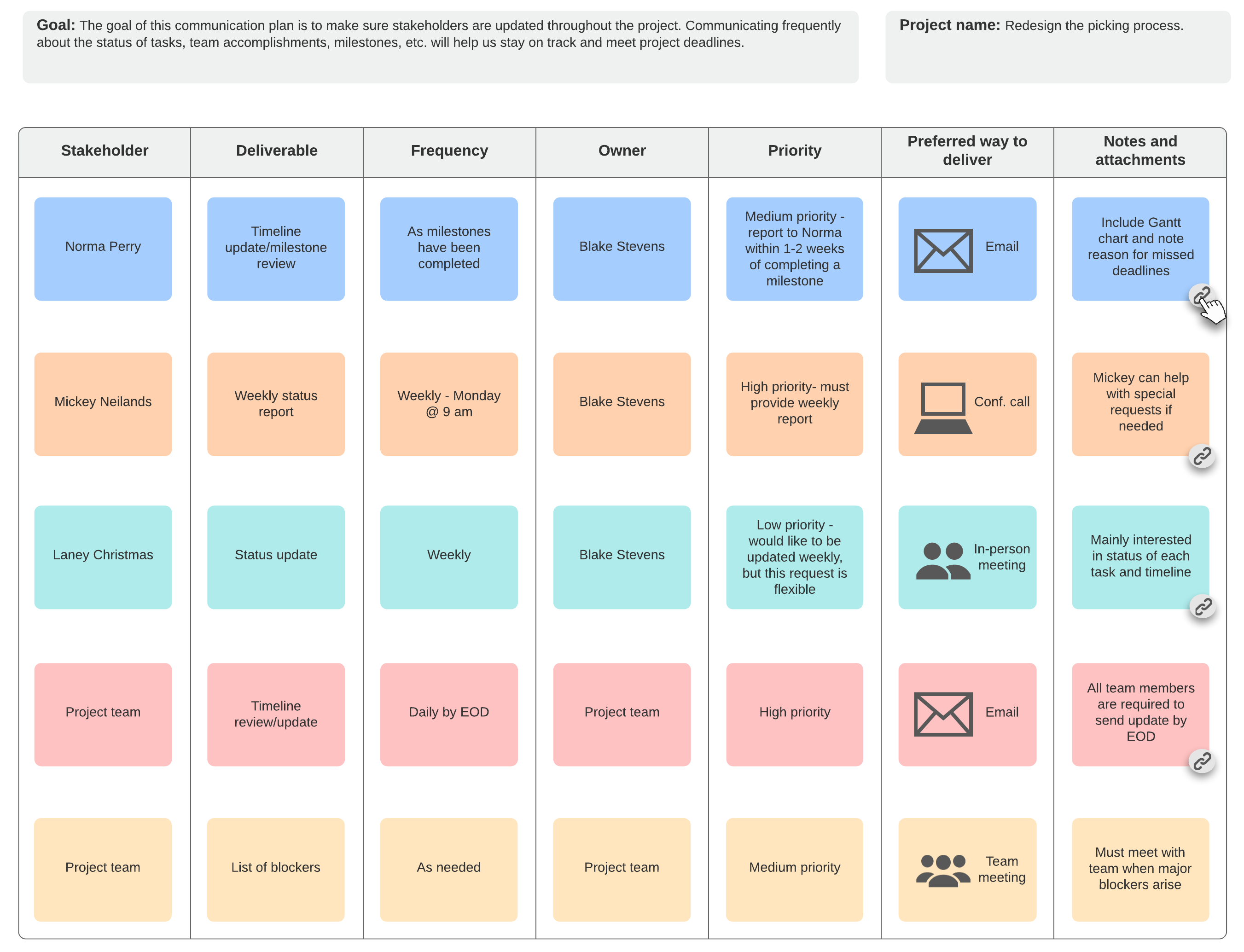
Project updates and team communication
Project updates and effective team communication are essential for the smooth functioning and success of any project. Clear and regular communication ensures that everyone on the team is on the same page, understands their responsibilities, and is aware of the project’s progress. Here’s how to effectively communicate project updates and maintain effective team communication:
Communicating Project Updates
-
Regular Updates: Schedule regular updates (e.g., weekly or bi-weekly) to keep everyone informed. Consistency is key.
-
Clear and Concise Information: Provide clear and concise information about the progress, highlighting completed tasks, upcoming tasks, and any changes to the project plan.
-
Use Visual Tools: Utilize visual tools like Gantt charts, graphs, or project dashboards to illustrate progress and timelines. This can make complex information more digestible.
-
Highlight Key Achievements and Challenges: Acknowledge milestones and achievements to motivate the team. Also, openly discuss challenges or roadblocks and how they are being addressed.
-
Actionable Items: Clearly outline any actionable items, who is responsible for them, and the deadlines.
-
Invite Feedback: Encourage team members to provide input or raise concerns. This can foster a collaborative environment and can lead to innovative solutions.
Effective Team Communication
-
Clear Communication Channels: Establish clear channels for communication, such as email, team meetings, or project management tools. Ensure everyone knows where and how to share information or ask questions.
-
Encourage Open Dialogue: Create an environment where team members feel comfortable sharing ideas, concerns, and feedback.
-
Regular Check-ins: Conduct regular one-on-one or team check-ins to discuss progress, address concerns, and provide support.
-
Be Accessible: Ensure that team leaders or project managers are accessible for queries and support.
-
Respect Different Time Zones: If working with a global team, be mindful of different time zones when scheduling meetings or expecting responses.
-
Cultural Sensitivity: Be culturally sensitive in your communication, respecting the diverse backgrounds of team members.
-
Use Collaborative Tools: Leverage collaborative tools and platforms that allow team members to work together effectively, share documents, and track progress.
-
Conflict Resolution: Address conflicts promptly and constructively, focusing on resolving the issue while maintaining positive relationships.
Example of a Project Update Email
Subject: Weekly Project Update: [Project Name] – Week of [Date]
Dear Team,
I hope this email finds you well. Here’s our weekly update for the [Project Name]:
Completed Last Week:
- Finalized the design phase.
- Completed the first draft of the project report.
Upcoming This Week:
- Begin the development phase (Team Lead: [Name]).
- Client meeting to discuss project milestones (Date/Time).
Challenges:
- Delay in receiving materials from the supplier. We are in communication with them to expedite the process.
Action Items:
- [Name]: Prepare a presentation for the client meeting.
- [Name]: Coordinate with the supplier to confirm material delivery dates.
Please let me know if you have any questions or if there’s anything I can assist with. Your hard work and dedication are greatly appreciated.
Best regards, [Your Name]
By following these guidelines, you can ensure effective communication within your team, keeping everyone aligned and informed about the project’s progress and fostering a collaborative and productive work environment.